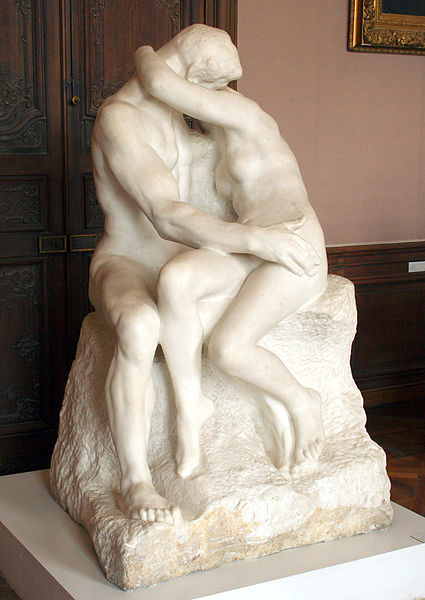Eroticism abound in literature. Even under
the straitlaced and morally-superior societies like the 18th and
early 19th century England, erotica, much to the wonder of the
high-minded detractors who considered such “pulp fictions” a considerable
threat to the well-being of the community, still managed to flourish. But 18th
century erotic novels rarely overstepped the marks by unfolding graphic details
of sexuality. There are often no more than just a glimpse of the flesh or an
illicit exchange of a kiss. Unlike the satiric illustrations by William Hogarth
which mostly chronicle a profligate’s irrevocable downfall, a bawdyhouse is yet
making its way to the erotica. But most often a boudoir, the room where women
conducted their toilettes and where men were strictly forbidden, that within
such a constricted place bespeaks the perfect locale for a couple’s tryst.
Art, in adherence to its supremacy, prefers
to let the emotions shown and sentiments felt rather than making explicit of
the sexual matter. The theme with a couple interlocking in a passionate kiss was
the favourite amidst artists who were daring enough to realize the passionate
feelings or even, the sexual tensions, through their artworks. It cannot be
more practical to use sculpture as a medium for embodying the motion of a
kissing couple. Auguste Rodin, being a sculptor who was noted for his
revolutionary technique that marked him as a forerunner of Modern sculptures,
showed also a departure of subject matters from those in the antiquity in his Kiss (1889). Marble seems more like a
pristine guise for this rather rapturous depiction of love- just look at how
the woman writhes her arms around the man’s neck, taking the initiative in procuring
a kiss. Even with a sculpture like this that oozes unabashed eroticism, for
decency’s sake Rodin restrained the potential gratuity of such intense
sentiment. Modesty can be seen in the discreet distance of the pair that,
despite their unabated love and irresistible desire, keeps their bodies from
being too recklessly intertwined. Eroticism was not something Rodin courted but
just pure, unalloyed manifestation of love.
Rodin’s 1889 sculpture reminds me of a
painting by Francesco Hayez- the coincidentally titled The Kiss (1859). It is obvious that from how the man is dressed (cape
and broad-brimmed hat), the meeting of the couple is surreptitious and thus the
kiss should be quick but no less passionate. An impression of conspiracy and
danger adds to this painting, with the subtle treatment of its lighting that underscores
both figures’ silhouettes, which lurk stealthily up the stairs. Unbeknownst to
the couple but to the astounded eyes of the viewers a third silhouette is
visible just behind the pillar. As if witnessing a tragedy slowly unfolds,
danger looms when the couple still revel in their ecstasy. We all know they
will be a doomed pair.
Back to sculpture. No conveyance of love
can be as naïve and innocent as that in Constantin Brancusi’s The Kiss (1916). One’s existence is
suddenly reduced of its forms when one is in love- not reduced to almost
nothingness as the stick-like figures in Alberto Giacometti’s haunting
sculptures, but the totality of figure which physiognomy is blurred. And the
kiss, sealed by the two overjoyed lovers to a degree beyond recognition, is the
sole subject of this sculpture; and what really matters. The display of
affection is however by no means merely a transaction of the two. There is
always someone witnessing perhaps from afar, as if watching an epic love movie alone
in an empty theatre.



Comments
Post a Comment